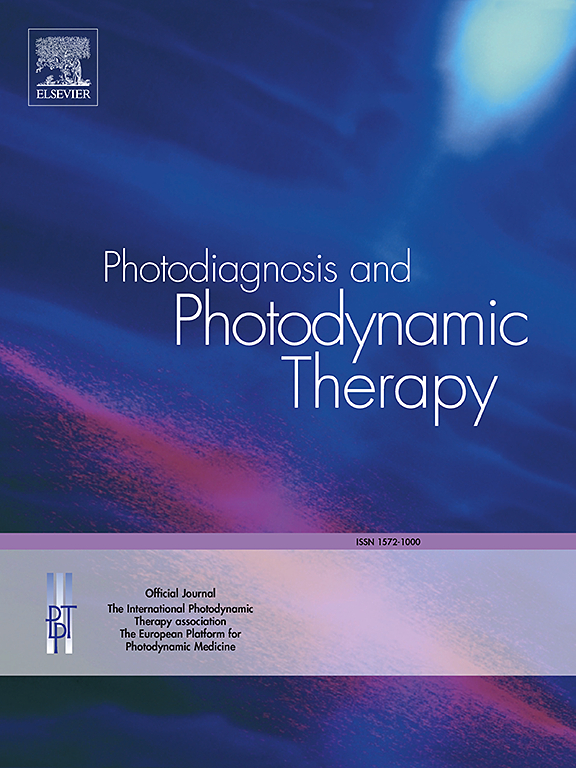InnovEyes 消融轮廓中角膜中央基质厚度降低的可预测性:一项回顾性研究。
IF 3.1
3区 医学
Q2 ONCOLOGY
引用次数: 0
摘要
目的:评价InnovEyes消融术中角膜中央基质厚度(CST)减少的可预测性。方法:回顾性研究采用InnovEyes资料进行手术的118只眼(61例)和采用Custom-Q资料进行手术的117只眼(67例)。术前和术后3个月采用前段光学相干断层扫描(AS-OCT)测量角膜中央CST、角膜中央厚度(CT)和角膜中央上皮厚度(CET)。计算了计划实现厚度(PAD)。比较计划与实现的中央CST、PAD及中央CET的增加情况。结果:InnovEyes组实现的中央CST降低为113.60±21.88 μm,与计划(108.70±19.87 μm, P = 0.075)无显著差异。InnovEyes组中心CST降低与计划降低之间存在较强的相关性(R2 = 0.884,P < 0.001),且强于Custom-Q组(R2 = 0.861,P < 0.001)。InnovEyes组和Custom-Q组中央CST降低的PAD分别为-4.87±8.17 μm和-4.76±9.75 μm (P = 0.966)。innovveyes组中央CET增加3.29±3.97 μm, Custom-Q组中央CET增加4.39±4.84 μm,差异无统计学意义(P = 0.064)。结论:InnovEyes消融术显示了中央CST降低的良好可预测性,确保了这种新型消融术的安全性。此外,InnovEyes的配置文件可能考虑了术后角膜上皮重塑,并提供了增强的预补偿。本文章由计算机程序翻译,如有差异,请以英文原文为准。
Predictability of central corneal stromal thickness reduction in InnovEyes ablation profile: A retrospective study
Objective: To evaluate the predictability of the central corneal stromal thickness (CST) reduction in InnovEyes ablation profile.
Methods: The retrospective study included 118 eyes (61 patients) who underwent surgeries based on InnovEyes profile and 117 eyes (67 patients) based on the Custom-Q. The central CST, the central corneal thickness (CT) and the central corneal epithelial thickness (CET) were measured using anterior segment optical coherence tomography (AS-OCT) preoperatively and postoperatively over 3 months. The planned-achieved thickness (PAD) was calculated. Planned and achieved central CST, PAD and increase of central CET were compared.
Results: The achieved central CST reduction was 113.60 ± 21.88 μm in the InnovEyes group, which was not significantly different from the planned (108.70 ± 19.87 μm, P = 0.075). There was a strong correlation between the achieved central CST reduction and the planned reduction in the InnovEyes group (R2 = 0.884, P < 0.001), which was stronger than in the Custom-Q group (R2 = 0.861, P < 0.001). The PAD of central CST reduction was -4.87 ± 8.17 μm and -4.76 ± 9.75 μm for the InnovEyes and Custom-Q groups, respectively (P = 0.966). The increase of central CET was 3.29 ± 3.97 μm in InnovEyes group and 4.39 ± 4.84 μm in Custom-Q group, with no significant difference (P = 0.064).
Conclusions: The InnovEyes ablation profile demonstrates good predictability of the central CST reduction, ensuring the safety of this novel profile. Besides, the InnovEyes profile may have taken postoperative corneal epithelial remodeling into consideration, and provided an enhanced pre-compensation.
求助全文
通过发布文献求助,成功后即可免费获取论文全文。
去求助
来源期刊

Photodiagnosis and Photodynamic Therapy
ONCOLOGY-
CiteScore
5.80
自引率
24.20%
发文量
509
审稿时长
50 days
期刊介绍:
Photodiagnosis and Photodynamic Therapy is an international journal for the dissemination of scientific knowledge and clinical developments of Photodiagnosis and Photodynamic Therapy in all medical specialties. The journal publishes original articles, review articles, case presentations, "how-to-do-it" articles, Letters to the Editor, short communications and relevant images with short descriptions. All submitted material is subject to a strict peer-review process.
 求助内容:
求助内容: 应助结果提醒方式:
应助结果提醒方式:


